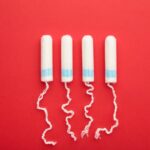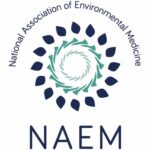Click here for more non-toxic tips from our Green Parent Guide
It is often said that the kitchen is the heart and soul of the home – so you want make sure that it’s a healthy place for your family! Below are some tips for stocking the fridge with pesticide-free food, avoiding cooking equipment that contains toxic chemicals, and using cleaning products that are safe for you and your baby.
Food
Treating your baby to healthy, fresh food is important. Pesticide residue is often found on conventionally grown fruits and vegetables. Some pesticides build up in your body over time, and long-term pesticide exposure has been linked to neurological, developmental, and reproductive disorders. Some store-bought baby foods, formulas, and canned foods have been found to be contaminated with Bisphenol A, which can leach from the packaging. Bisphenol A (BPA) is an hormone disruptor linked to obesity, diabetes, breast cancer, and other health conditions.
Try This!
- Choose baby food labeled “organic,” “pesticide-free,” or “hormone-free” if possible.
- Shop at your local farmers’ market when you can. Many local farmers grow organically, even though they may not be certified. Then, you can make your own baby food with local, organic fruits and vegetables.
- Use produce lower in pesticides. Choose onion, avocado, sweet corn, pineapple, mango, sweet peas, asparagus, kiwi, cabbage, eggplant, cantaloupe, watermelon, and grapefruit. Avoid celery, peaches, apples, blueberries, nectarines, bell peppers, spinach, cherries, kale, potatoes and grapes, which are generally grown with more pesticides. Learn more with the Environmental Working Group’s Guide to Pesticides in Produce.
- Can the cans. Choose fresh, frozen, or glass-jarred foods over canned where possible. Many canned food liners contain Bisphenol A. Look for canned food brands that state they are BPA-free.
- Breast milk is the best milk! For moms that are able to breastfeed, breast milk is the best option for providing nutrition and boosting your child’s immune system. While toxic contaminants have been detected in breast milk, average levels have not been deemed harmful enough to counteract the many health benefits of breastfeeding.
Food Containers and Cooking Equipment
Whether you’re storing leftovers, wrapping up food, or using a cutting board, the plastics found in kitchens often contain toxins such as polyvinyl chloride (PVC), shown by the recycle symbol number 3. Another red flag is non-stick or Teflon cookware, which releases perfluorooctanoic acid (PFOA) when heated to 450 degrees. Exposure to PFOA is liked to developmental harm and cancer.
Try This!
- Avoid plastic. Use glass containers to store food, wood or bamboo cutting boards, and stainless steel cooking utensils.
- Use safer plastic. If using plastic, look for the recycle symbol number 4, polyethylene (LDPE), and never put any plastic in the microwave.
- Choose PVC-free baby dishes and utensils. Instead of plastic, consider using wood, stainless steel, or bamboo.
- Use cast iron, carbon steel, or stainless steel pans for cooking.
Household Cleaners
Your little explorer can be exposed to toxic chemical residue on surfaces and floors from household cleaning products. Many all-purpose cleaners and disinfectants contain chemicals that are linked to serious health problems, including asthma.
Try This!
- Make your own cleaners! Mix your own with non-toxic ingredients like vinegar and baking soda. Find more information and green cleaning recipes.
- Use less toxic products. Avoid products marked “Danger” or “Poison,” and reduce your use of products marked “Caution.”
- Use fewer products. An all-purpose cleaner can handle a lot of cleaning jobs around the house; it’s not necessary to have a different product for each room.
- Look for products that have all ingredients listed on the label. Avoid phthalates, glycol ethers, ammonium quaternary compounds, and triclosan.
Make A Change & Check It Off!
Pick a change (or a few!) you can commit to making.
✔ Buy organic, hormone-free, and locally produced food more often.
✔ Make your own baby food.
✔ Breastfeed, if possible.
✔ Replace non-stick, Teflon cookware with cast iron, carbon steel, or stainless steel pans.
✔ Store food in non-PVC plastic containers or glass jars.
✔ Look for safer plastics or use wood, stainless steel, or bamboo for baby dishes & utensils.
✔ Avoid microwaving plastic containers or wrappers.
✔ Avoid canned food when possible.
✔ Use WVE’s recipes to make your own non-toxic cleaners.
✔ Use fewer cleaning products.





